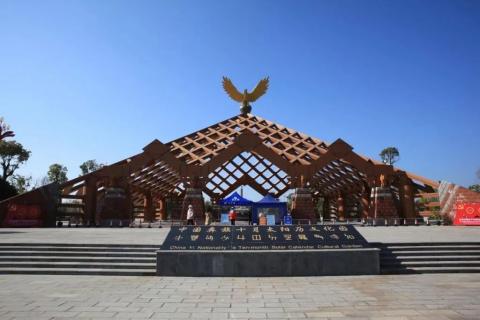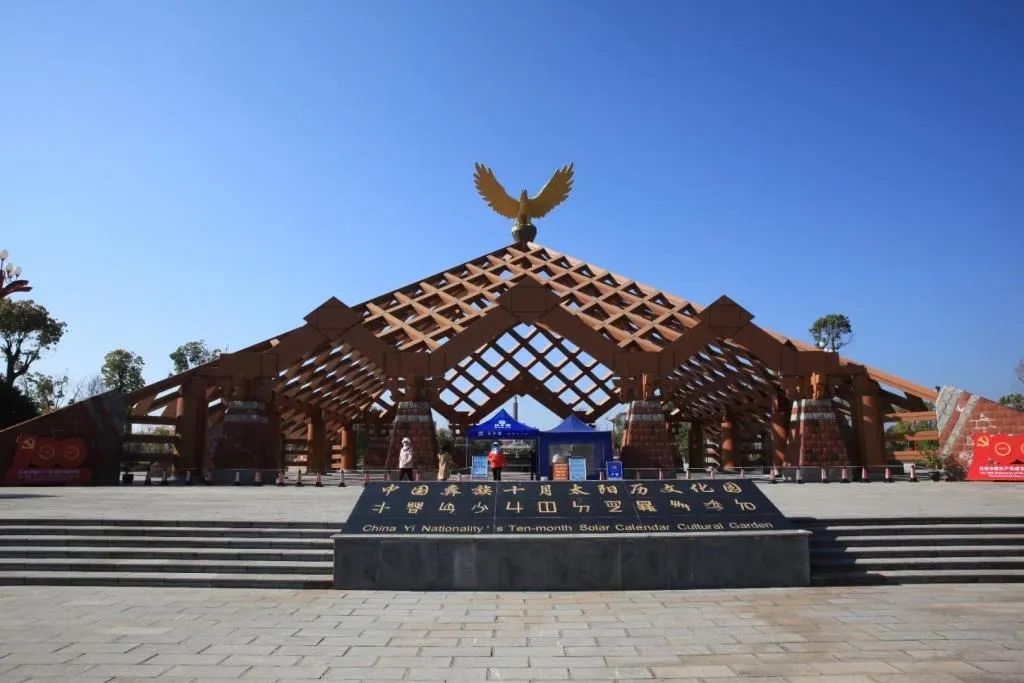
March 28, 2022 is the sixth and last day of the Dali Prefecture niche tour. After breakfast, we set off from the ancient city and visited the "Yi People's October Solar Calendar Cultural Square" near the ancient city. Then return to Panzhihua via National Highway 227 and Beijing-Kunming Expressway. During this period, we had lunch in Yuanmou, took pictures in the rapeseed fields on the roadside of Mouding, and took pictures in the Tulin scenic spots. We arrived home smoothly at around 3 p.m. and completed the trip.


1. Route, road conditions, distance
Chuxiong Yi Ancient Town - Chuxiong October Solar Calendar Cultural Square - Yuanmou - Panzhihua. The total distance is 231Km (national highway 111Km, highway 120Km).

2. Yi People’s October Solar Calendar Cultural Square
1, calendar
The calendar is a symbol of human civilization. One of the essences of the world-famous Mayan culture is the calendar. In the past, the lunar calendar was adopted in most areas of China, but the Yi people in my country still retain a little-known ancient calendar - the Yi October solar calendar. It is speculated that this calendar originated from Fuxi in ancient times and has a history of about tens of thousands of years. It traces the history of Chinese civilization back to the three ancient civilizations of Egypt, India, and Babylon. The Yi people's ten-month solar calendar was the most accurate and simple astronomical calendar in the world at that time.


2, Gregorian calendar and lunar calendar


3, Yi Nationality October Solar Calendar
The Yi people's October solar calendar uses 12 zodiac signs to mark the dates, and 3 zodiac signs constitute one period (month), that is, 36 days are one month, and 30 zodiac weeks are one year. A year has 10 months and 360 days. At the end of the 10 months, there are also 5 "New Year Days", which is called the "October Year", and the whole year has 365 days. An extra day is added every 3 years, that is, a leap year (leap day), which is 366 days.


According to research, the Xiangtian Tomb of the Yi people was actually an observatory used by ancient people to observe the sky and stars, and is closely related to the Yi solar calendar. The Yi Nationality's ten-month solar calendar is a long and mysterious ancient calendar. It has a profound relationship with Chinese Confucianism, Taoism, and Yin-Yang theory. There are still many "codes" that need to be deciphered and studied.
3. The cultural and scenic sculpture pillars of the Yi people’s October Solar Calendar Square
The cultural landscape sculpture totem pillars in the October Solar Calendar Square are centered on the ancestor pillars. The two pillars to the south are the god pillars and the fire god pillars; to the north are the gourd pillars; and to the east are the bamboo pillars, sun pillars, tiger pillars Divine Pillar; in the west are the Dragon Divine Pillar, Eagle Divine Pillar and Sheep Divine Pillar.




The ten sacred pillars were designed by astronomers based on the ancient Yi people's principle of observing the movement of the sun on poles to determine the seasons. They are strictly scientific and the observation results are very accurate.
In the morning, the sun shines on the Bamboo Divine Pillar, and the shadow of the pillar is cast on the Divine Pillar of the Ancestors. It is the "Summer Solstice" when the sun shines on the Divine Pillar. The ancestral pillar is marked with "Winter Solstice".
During this festival, at sunset, the sun shines on the Dragon God Pillar, Eagle God Pillar, Eagle God Pillar, and Sheep God Pillar respectively, and the shadows of each pillar are cast on the Ancestor God Pillar.
At noon on the "Winter Solstice" day, the sun shines on the Fire God Pillar, and the shadow of the pillar is cast on the center of the Ancestor God Pillar.
At noon on the summer solstice, the sun shines on the ten totem pillars. The shadow of each pillar is in the north, and the shadow of the pillar is very short.
4. Learn about “calendar” knowledge
While traveling to South China by car in November 2020, I visited the Astronomy Experience Center at the "Sky Eye" scenic spot in Pingtang County, Guizhou, and gained a preliminary understanding of the calendar. The "calendar" knowledge is extensive and spiritual, and requires reading and learning a lot of astronomical knowledge.
The first knowledge about the Yi people's ten-month solar calendar was when I first came to the newly built Yi ancient town. That time I visited the newly built "Solar Calendar Park". The third floor of the four-story square is The museum displays information about astronomy and calendar and is quite rich in knowledge. Unfortunately, since that time, the museum has been closed several times since then. This time I still couldn't visit. I can only make up classes online after returning home.
